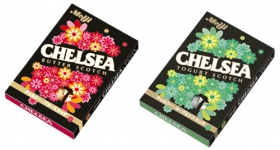Sometime in my early 20s, I discovered the pleasure of the Japanese izakaya. Roughly speaking, these are taverns: places to consume beer, sake, shochu (or all three!) with food that’s straightforward, focused on the ingredients and well-suited to drinking. I loved the drunk salary men cavorting at the yakitori stands under the tracks near Tokyo's Shimbashi station and the low-key drinking spot where I first tasted horse (raw, with garlic and green onion).
These kinds of food are hard to find back in the United States: uncomplicated, reliant on high-quality ingredients and without the seriousness that seems to adhere to Japanese food as it makes its way to the West. With the exception of horse, I know from years at Chez Panisse in Berkeley that we here in California have raw ingredients to rival those of Japan.
So I've driven all over Northern California, hunting down ingredients for my catering company, Peko-Peko. I've dug up bamboo shoots just as they popped out of the ground in suburban backyards. I've skewered locally raised pastured chicken (heart, skin and all) to grill as yakitori; fried up petrale sole, caught the same day, to be eaten whole with bones and fins; pickled just-picked, tender red turnips and their leaves; cured steelhead salmon roe with soy and sake; and, of course, cooked freshly harvested (or "new crop") California rice (my current favorite is Tamaki Gold Koshihikari).
Peko-Peko's cooking won't be completely Japanese, but that's OK with me. We are in California, after all, and good Japanese Californian food suits me better than not-quite-as-good-as-Japan Japanese food. And it goes well with a beer, too.
How to make perfectly cooked rice
Although simple in theory, cooking perfect, aromatic rice is not easy. It's always the most daunting project for me when cooking for a large group. Al dente rice is terrible. Mushy rice is worse. At home, I never cook less than two cups or more than four cups at a time.
My childhood standard was Koda Farm Kokuho Rose rice. Fitting, I suppose, as this rice varietal is like me, half-Japanese. The Koda family first migrated from Fukushima, Japan, in 1908 and hybridized Kokuho Rose after returning to the San Joaquin Valley from internment camps. Raised in California but of Japanese extraction, this variety has a slightly longer grain than most of what's eaten in Japan but shares the same toothiness and fragrance of the popular Koshihikari rice (such as California's Tamaki Gold).
(1) Carefully measure exactly two cups of dry rice into a heavy cooking pot with tight fitting lid (or rice cooker).
(2) Wash it. Washing is important. Equally important is to wash it decisively: The longer the grains stand in the water, the more water they absorb.
(3) Add enough cold water to cover and vigorously swish the rice with your fingertips.
(4) Pour off the milky water, using a wire mesh strainer to catch any stray grains. Quickly fill the pot three-quarters full with water, swish and strain again. Repeat until the water runs clear; I wash it five to seven times.
(5) Pour all the rice into a wire mesh strainer and let drain for a half-hour. Pour the rice back into your pot and, if using a Koshihikari varietal (like Tamaki Gold), add precisely the same amount of water as rice. If using a Kokuho Rose varietal (like Koda Farm) add 1 1/8 cup water to every cup of rice. To complicate matters, if you buy new crop rice in the fall, you'll find 5 to 10 percent less water is needed; the longer rice sits in storage, the more water evaporates from the grain and the more water you'll need to add.
(6) To cook rice on the stove like my mother used to, place the pot on the stove, lid tightly on, and bring to a boil. You'll know when the rice has reached a boil by the steam spitting out from under the lid. Turn the flame down to the lowest possible, and cook for 20 minutes. Turn off heat, and allow the rice to sit undisturbed for 10 minutes. Open and mix carefully with a wet bamboo rice paddle. Serve immediately or cover with a damp cloth to absorb condensation that may drip from the lid.
Sylvan Mishima Brackett is the former creative director at Chez Panisse in Berkeley. He started a Japanese catering company, Peko-Peko (eatpekopeko.com), in Oakland, CA, in 2009.
Web extra: Sylvan Mishima Brackett's family gyoza recipe.









Comments